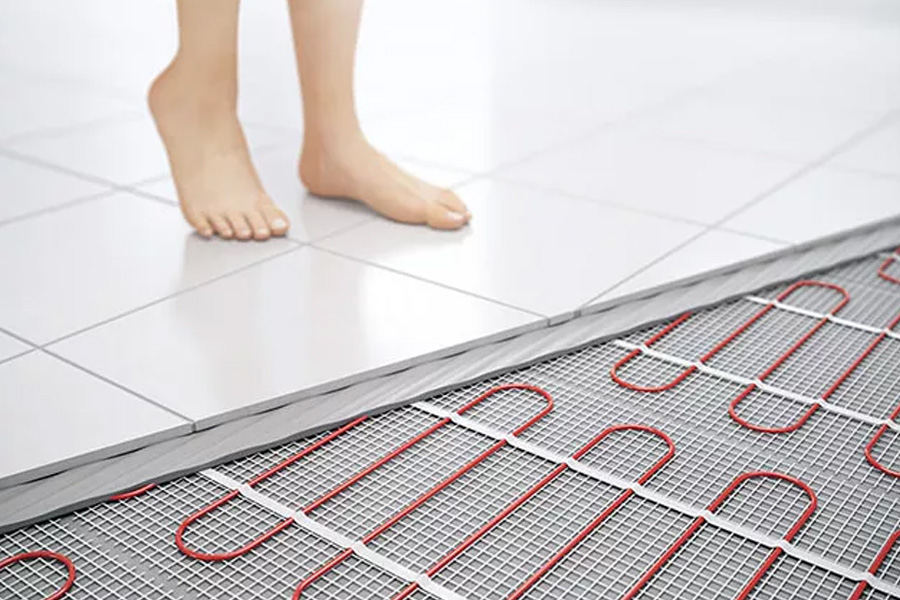Smart Home Integration: Automating Your Floor Heating System

Image Source: www.screwfix.com
As smart home technology continues to evolve, integrating intelligent systems into our daily lives has become more accessible and beneficial. One of the most impactful advancements in home automation is the ability to control and optimize heating systems. In this blog post, we will explore how to automate your floor heating system, focusing on both water and electric underfloor heating options. By leveraging smart technology, you can enhance comfort, improve energy efficiency, and achieve greater control over your home’s heating.
The Benefits of Smart Home Integration
Enhanced Comfort and Convenience:
Automating your floor heating system allows you to maintain a consistent and comfortable temperature throughout your home. With smart thermostats and sensors, you can easily program and adjust heating settings based on your daily schedule, ensuring that your home is always warm when you need it.
Energy Efficiency:
Smart home integration helps you use energy more efficiently by optimizing heating schedules and reducing wastage. Intelligent systems can learn your preferences and adjust heating accordingly, minimizing energy consumption and lowering your utility bills.
Remote Access and Control:
With smart home technology, you can control your floor heating system remotely using your smartphone or other devices. Whether you’re at work, on vacation, or simply in another room, you can monitor and adjust your heating settings to suit your needs.
Automating Water and Electric Underfloor Heating
Water Underfloor Heating Systems:
Water underfloor heating systems, also known as hydronic systems, circulate warm water through pipes beneath the floor. These systems are typically controlled by a central thermostat connected to a boiler or heat pump. Automating a water underfloor heating system involves integrating smart thermostats and sensors that can regulate the temperature based on real-time data and user preferences.
Electric Underfloor Heating Systems:
Electric underfloor heating systems use electrical cables or mats installed under the floor surface to generate heat. These systems can be easily automated with smart thermostats that offer precise control over heating schedules and temperatures. The integration process is straightforward, making electric underfloor heating an ideal candidate for smart home automation.
Steps to Automate Your Floor Heating System
1. Choose the Right Smart Thermostat:
Selecting a compatible smart thermostat is the first step in automating your floor heating system. Ensure that the thermostat is designed for underfloor heating and supports both water and electric systems. Look for features such as programmable schedules, remote access, and compatibility with your existing smart home ecosystem.
2. Install Temperature Sensors:
Temperature sensors play a crucial role in maintaining optimal comfort and efficiency. Place sensors in key areas of your home to monitor the temperature accurately. These sensors can communicate with the smart thermostat to adjust the heating system based on real-time data.
3. Integrate with Smart Home Platforms:
Integrate your floor heating system with your existing smart home platform, such as a smart speaker or home automation hub. This allows you to control your heating system using voice commands and automate it alongside other smart devices in your home.
4. Set Up Schedules and Zones:
Create heating schedules that align with your daily routine. For example, you can program the system to warm up your home before you wake up and reduce heating while you’re at work. Additionally, consider setting up heating zones to control the temperature in different areas of your home independently, enhancing both comfort and energy efficiency.
5. Monitor and Adjust:
Regularly monitor your floor heating system using your smart home app. Analyse energy usage patterns and make adjustments to optimize performance. Smart thermostats often provide insights and recommendations to help you improve efficiency further.
Comparing Automation for Water and Electric Underfloor Heating
When automating your floor heating system, it’s essential to consider the specific requirements and benefits of both water and electric underfloor heating.
Water Underfloor Heating:
Automating a water underfloor heating system may involve a more complex installation process, especially if integrating with a central boiler or heat pump. However, once set up, these systems can provide highly efficient and evenly distributed heat. Smart thermostats can optimize the operation of the boiler or heat pump, ensuring minimal energy consumption.
Electric Underfloor Heating:
Electric underfloor heating systems are generally easier to automate due to their straightforward installation and compatibility with smart thermostats. These systems offer precise control over heating, making it simple to adjust schedules and temperatures remotely. However, the energy efficiency of electric systems depends on electricity costs and the availability of renewable energy sources.
Conclusion
Integrating smart home technology with your floor heating system offers numerous benefits, from enhanced comfort and convenience to improved energy efficiency. Whether you choose water or electric underfloor heating, automating your system with smart thermostats, sensors, and home platforms can significantly enhance your living experience. By following the steps outlined in this post, you can seamlessly incorporate smart home integration into your floor heating system, creating a warm, efficient, and intelligent home environment.





